[Editor’s Note: The U.S. Army’s capstone unclassified document on the Operational Environment (OE) states:
“China is rapidly modernizing its armed forces and investing heavily in readiness and technological research. Its rapid development means that it likely will surpass Russia as our pacing threat sometime around 2030.” — TRADOC Pamphlet (TP) 525-92, The Operational Environment and the Changing Character of Warfare, p. 12
The U.S. Army’s current operating concept further states:
“China possesses the vision and strategic depth to become the U.S.’s most powerful competitor in time. Unlike Russia, China has the economy and technological base, such as an independent 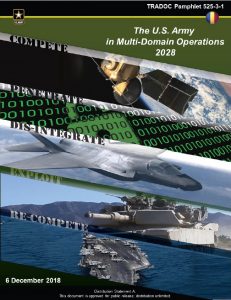 microelectronics industry and world-leading artificial intelligence development process, sufficient to overtake current Russian system overmatch in the next 10-15 years. China is rapidly building a world class military intended to project power globally. In the future, China will become the conceptual pacing threat for the Joint Force. The risk associated with this assumption will be continuously assessed to ensure the ability to adapt conceptually should China accelerate its capability development.” — TP 525-3-1, The U.S. Army in Multi-Domain Operations 2028, p. 7
microelectronics industry and world-leading artificial intelligence development process, sufficient to overtake current Russian system overmatch in the next 10-15 years. China is rapidly building a world class military intended to project power globally. In the future, China will become the conceptual pacing threat for the Joint Force. The risk associated with this assumption will be continuously assessed to ensure the ability to adapt conceptually should China accelerate its capability development.” — TP 525-3-1, The U.S. Army in Multi-Domain Operations 2028, p. 7
In today’s post, we review what we’ve learned about China in an anthology of insights gleaned from previous posts. Is the U.S. Army effectively preparing for competition and conflict with the China described below? Read on!]
One of the challenges associated with the changing character of warfare comes not just from the emergence of disruptive technologies and our adversaries’ embrace of them, but also from the ways in which they adopt hybrid strategies that challenge traditional symmetric advantages and conventional ways of war. China has already demonstrated its adroit ability to accomplish this — and Beijing is continuing to invest significant resources into research and development of a wide array of advanced technologies. Coupled with its time-honored practice of reverse engineering technologies or systems it purchases or acquires through espionage, China and its military forces may prove to be formidable by 2030.
1. Exploitation: China’s whole-of-nation approach, which involves synchronization of actions across government, military, and industry, will facilitate exploitation of operational environments and enable it to gain global influence through economic exploitation. China will leverage the international system to advance its own interests while attempting to constrain others, including the U.S. The following conditions and methods are conducive to exploitation by China, enabling them to shape the future strategic environment:
Infrastructure Capacity Challenges: China targets undeveloped and fragile environments where their capital investments, technology, and 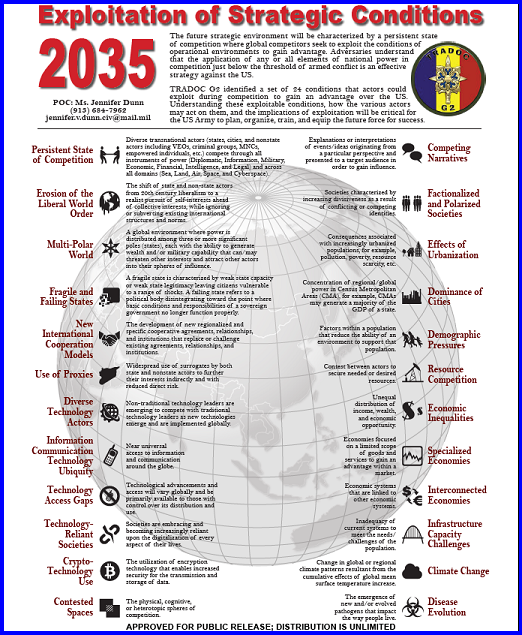 human capital can produce financial gains and generate political influence.
human capital can produce financial gains and generate political influence.
Interconnected Economies: China looks for partners and opportunities to become a significant stakeholder in a wide variety of economies in order to capitalize on its investments as well as generate political influence.
Specialized Economies: China looks for opportunities to partner with specialized markets and leverage their vulnerabilities for gain.
Technology Access Gaps: China targets areas where their capital investments in technology provide partners with key resources and competitive advantages by filling technology gaps.
These conditions and methods have the following implications for the U.S. Army:

-
-
Traditional Army threat paradigms may not be sufficient for competition.
-
-
- The Army could be drawn into unanticipated escalation as a result of China’s activities during the competition phase.
-
- Army military partnerships will likely be undermined by China in 2035.
-
- Army operations and engagements will be increasingly impacted by the pervasiveness of Chinese goods, technology, infrastructure, and systems.
See Competition in 2035: Anticipating Chinese Exploitation of Operational Environments
2. Innovation: Under President Xi Jinping‘s leadership, China is becoming a major engine of global innovation, second only to the United States. China’s national strategy of “innovation-driven development” places innovation at the forefront of economic and military development. These efforts are beginning to pay off, as Beijing is becoming as innovative as Silicon Valley. China continues to strengthen its military through a series of ambitious Science and Technology (S&T) plans and investments, focusing on disruptive and radical innovations that will enable them to seize the high ground with decisive technologies.
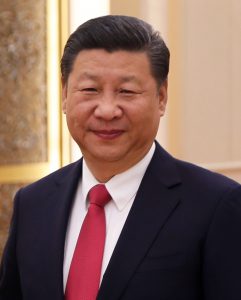
Artificial intelligence (AI), quantum information, and Internet of Things are three examples of disruptive technologies shaping the future and in which China aspires to one day have a large or controlling stake. In his speech delivered at the 19th National Congress of the Communist Party of China in October 2017, President Xi stated that “innovation is the primary driving force behind development” and “it is the strategic underpinning for building a modernized economy.”
President Xi leads China’s Central Military-Civil Fusion Development Commission, whose priorities include intelligent unmanned systems, biology and cross-disciplinary technologies, and quantum S&T. Though the implementation of a “whole of nation” strategy, President Xi is leveraging private sector advances for military applications. This strategy includes the establishment of Joint Research Institutes to promote collaborative R&D; new national labs focused on achieving dual-use advances; and collaboration within national military-civil fusion innovation demonstration zones. Major projects concentrate on quantum communications and computing, brain science, and brain-inspired research.
See Cindy Hurst‘s A Closer Look at China’s Strategies for Innovation: Questioning True Intent and Proclaimed Mad Scientist Elsa Kania‘s China’s Drive for Innovation Dominance
3. Intelligentization: This uniquely Chinese concept of applying AI’s machine speed and processing power to military planning, operational command, and decision support is expected to redraw the boundaries of warfare, restructure combat forces, and reshape the rules of engagement. 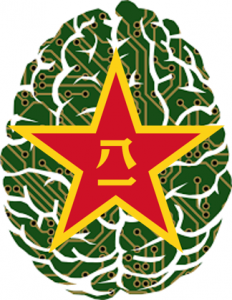 Intelligentized warfare will see the integration of military and non-military domains; and the boundary between peacetime and wartime will get increasingly blurred. The outcome of a war will not be determined by who destroys whom in a kinetic sense, but rather who gains maximum political benefits. Intelligentized warfare will see the integration of human and machine intelligence. It will reshape warfighting in every dimension and within every realm. Human fighters will eventually stop being the first line of fighting and intelligent systems will prevail. “Human-on-human” warfare will be replaced by “machine-on-human” or “machine-on-machine warfare.”
Intelligentized warfare will see the integration of military and non-military domains; and the boundary between peacetime and wartime will get increasingly blurred. The outcome of a war will not be determined by who destroys whom in a kinetic sense, but rather who gains maximum political benefits. Intelligentized warfare will see the integration of human and machine intelligence. It will reshape warfighting in every dimension and within every realm. Human fighters will eventually stop being the first line of fighting and intelligent systems will prevail. “Human-on-human” warfare will be replaced by “machine-on-human” or “machine-on-machine warfare.”
See “Intelligentization” and a Chinese Vision of Future War
4. Quantum Science: China’s massive investments in quantum computing could succeed someday in the decadal marathon towards a fully functional and universal quantum computer. If developed in secret or operational sooner than expected, these immense computing capabilities could be unleashed to break public key cryptography.  Such asymmetric cryptography, which today is quite prevalent and integral to the security of our information technology ecosystem, relies upon the difficulty of prime factorization, a task beyond the capabilities of today’s classical computers but that could be cracked by a future quantum computer. The impact could be analogous to the advantage that the U.S. achieved through the efforts of American code-breakers ahead of the Battle of Midway.
Such asymmetric cryptography, which today is quite prevalent and integral to the security of our information technology ecosystem, relies upon the difficulty of prime factorization, a task beyond the capabilities of today’s classical computers but that could be cracked by a future quantum computer. The impact could be analogous to the advantage that the U.S. achieved through the efforts of American code-breakers ahead of the Battle of Midway.
The PLA might also realize its ambitions to develop quantum radar that could be the “nemesis” of U.S. stealth fighters and bolster Chinese missile defense. This “offset” technology could overcome the U.S. military’s advantage in stealth. Similarly, the ‘spooky’ sensitivity in detection enabled by techniques such as ghost imaging and quantum remote sensing could enhance PLA ISR capabilities.
See Ms. Kania‘s Quantum Surprise on the Battlefield?
5. Space: China seeks to challenge American dominance in the space domain. A study of lasers in orbit acting on other objects also in orbit by researchers from the Information and Navigation College, Air Force Engineering University, Xi’an, China, received international attention recently. This study demonstrated the possibility of using lasers to help remove “space junk.” This debris presents a major challenge for every space actor because particles as small as flecks of paint can cause damage to orbiting assets, given their high velocities. The Chinese proposal involved a space-based laser strong enough to vaporize a portion of the object’s mass, altering its flight path enough to cause it to de-orbit, resulting in its re-entry and burning up in the atmosphere. 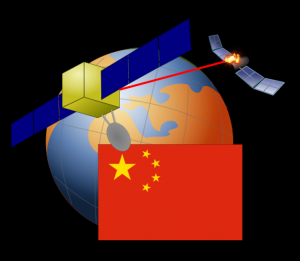 This “space broom” may be the solution the international community is looking for regarding space debris; however, it has raised some eyebrows in the scientific and defense communities. There is concern that the type and strength of this laser could present a dual-use potential for military application, such as satellite sabotage or the destruction of space assets, in the event of conflict on Earth escalating to the level of physically attacking a competitor’s assets in space.”
This “space broom” may be the solution the international community is looking for regarding space debris; however, it has raised some eyebrows in the scientific and defense communities. There is concern that the type and strength of this laser could present a dual-use potential for military application, such as satellite sabotage or the destruction of space assets, in the event of conflict on Earth escalating to the level of physically attacking a competitor’s assets in space.”
See Proclaimed Mad Scientist Marie Murphy‘s The Final Frontier: Directed Energy Applications in Outer Space
6. Genetic Engineering:
 China plans to lead the world in precision medicine and human enhancement. In November 2018, Chinese Scientist Dr. He Jiankui claimed to have used CRISPR/Cas9 to edit the CCR5 gene of human embryos to generate an inherited resistance to HIV, smallpox, and cholera. Although it appears that this genetic modification will create a resistance to certain types of infections, altering CCR5 expression may have other phenotypic effects, as well. For example, studies have shown that the deletion of the CCR5 gene may affect memory; and therefore this specific gene edit may have modified the cognitive functions of these “CRISPR babies.”
China plans to lead the world in precision medicine and human enhancement. In November 2018, Chinese Scientist Dr. He Jiankui claimed to have used CRISPR/Cas9 to edit the CCR5 gene of human embryos to generate an inherited resistance to HIV, smallpox, and cholera. Although it appears that this genetic modification will create a resistance to certain types of infections, altering CCR5 expression may have other phenotypic effects, as well. For example, studies have shown that the deletion of the CCR5 gene may affect memory; and therefore this specific gene edit may have modified the cognitive functions of these “CRISPR babies.”
Given that CRISPR/Cas9, along with other gene editing tools, can be used for disruptive purposes (e.g., development of “designer pathogens” not currently listed/governed by international bioweapon treaties and conventions; alteration of human structure and functions; modification of agricultural systems, etc.), these advancements pose defined risks and threats to global security. While the use of gene editing techniques to create lethal and/or destructive agents is certainly possible, we believe that it is far more feasible – and perhaps more effective and  efficient – to pursue the use of gene-edited agents in “mass disruptive” non-kinetic engagements. Such precision disruption can exploit a society’s vulnerabilities, and generate ripple effects to unsettle various domains and dimensions of geo-political stability and power. For example, allowing human use of gene editing techniques could foster attraction of both researchers seeking to advance potential translational applications of genetic methods (i.e., “research tourism”), and patients seeking newly developed gene-editing interventions (i.e., “medical tourism”) for the treatment of certain diseases as well as genetic modification for “wellness” and/or enhancement. Moreover, the use of gene editing techniques to modify crops, livestock, and to change environmental flora and fauna can incur equally disruptive effects on global ecologies, markets, and economics.
efficient – to pursue the use of gene-edited agents in “mass disruptive” non-kinetic engagements. Such precision disruption can exploit a society’s vulnerabilities, and generate ripple effects to unsettle various domains and dimensions of geo-political stability and power. For example, allowing human use of gene editing techniques could foster attraction of both researchers seeking to advance potential translational applications of genetic methods (i.e., “research tourism”), and patients seeking newly developed gene-editing interventions (i.e., “medical tourism”) for the treatment of certain diseases as well as genetic modification for “wellness” and/or enhancement. Moreover, the use of gene editing techniques to modify crops, livestock, and to change environmental flora and fauna can incur equally disruptive effects on global ecologies, markets, and economics.
See Proclaimed Mad Scientist Dr. James Giordano and Joseph DeFranco‘s Designer Genes: Made in China?
7. Neuroscience and Technology (neuroS/T): Significant developments in neuroscience and technology (neuroS/T) are employable in warfare, intelligence, and national security (WINS) operations. As has been shown, these tools and methods are certainly viable for use in kinetic warfare; however, we believe that it 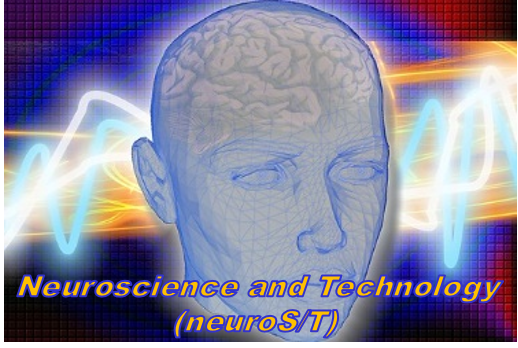 is far more feasible, facile – and therefore of greater value – to consider and pursue the brain sciences for producing “mass disruption” effects in non-kinetic engagements. Weaponry (i.e., means of contending against others) can be generally categorized as “Hard” and “Soft.” “Hard” weaponized applications of neuroS/T include pharmacological agents, microbes, organic toxins, and devices (i.e., “drugs, bugs, toxins, and tech”). Research, development, and use of these weapons are regulated by current international conventions and treaties, at least to some extent; and the scope and limitations of these treaties remain a focus of international discussion, contention, and debate. But it is equally important to acknowledge the capability that can be leveraged by employing forms of neuroS/T as “soft” weapons, to influence multinational, if not global economic, social, and political stability as well as balances of power.
is far more feasible, facile – and therefore of greater value – to consider and pursue the brain sciences for producing “mass disruption” effects in non-kinetic engagements. Weaponry (i.e., means of contending against others) can be generally categorized as “Hard” and “Soft.” “Hard” weaponized applications of neuroS/T include pharmacological agents, microbes, organic toxins, and devices (i.e., “drugs, bugs, toxins, and tech”). Research, development, and use of these weapons are regulated by current international conventions and treaties, at least to some extent; and the scope and limitations of these treaties remain a focus of international discussion, contention, and debate. But it is equally important to acknowledge the capability that can be leveraged by employing forms of neuroS/T as “soft” weapons, to influence multinational, if not global economic, social, and political stability as well as balances of power.
Moreover, with the growth of China’s interests, investments, and activities in neuroS/T, it is important to note that differing cultural (and political) needs, values, philosophies, norms, and mores can and often do affect the ethical codes that guide and govern the conduct of scientific research. In some cases, these differing ethical standards may create opportunistic windows to expedite neuroS/T research, and advance outcomes and products to ultimately effect global markets. China has recognized the technical, social, medical, military, and political value of neuroS/T, prompting the fortification of current programs, and initiation of new programs in brain sciences that are aimed at broad translational use(s). Toward such ends, China has both stated intent and capability to use precision disruptive methods to target competitors’ vulnerabilities to incur multi-dimensional ripple effects to influence various spheres of economic, social and geo-political power.
See Mr. DeFranco‘s, CAPT (USN – Ret.) L. R. Bremseth‘s, and Dr. Giordano‘s China’s Brain Trust: Will the U.S. Have the Nerve to Compete?
8. Polar Competition: China continues to show interest and invest time, funding, and research in the polar regions. According to Xinhuanet, China has her first  polar satellite — the BNU-1 has successfully obtained data on the polar regions and is conducting full-coverage observation of the Antarctic and the Arctic every day. Developed by the Beijing Normal University and Shenzhen Aerospace Dongfanghong Development Ltd., the satellite will promote research of the Earth’s polar regions and support China’s upcoming 36th Antarctic expedition by enhancing its navigation capability in the polar ice zone.
polar satellite — the BNU-1 has successfully obtained data on the polar regions and is conducting full-coverage observation of the Antarctic and the Arctic every day. Developed by the Beijing Normal University and Shenzhen Aerospace Dongfanghong Development Ltd., the satellite will promote research of the Earth’s polar regions and support China’s upcoming 36th Antarctic expedition by enhancing its navigation capability in the polar ice zone.
 China’s first ice breaker, Xue Long [Snow Dragon] doubles as a polar research vessel and has spent most of her time in the Arctic and Antarctic including over 20 annual Chinese Antarctic expeditions. The vessel was built in Soviet Ukraine shipyards in 1993. Xinhuanet reports that Xue Long 2, built in China, will probably make the Antarctic voyage this year. China maintains the Taishan Station in Antarctica. The development of the Nanji 2 all-terrain amphibious polar vehicle will support the station and other polar research.
China’s first ice breaker, Xue Long [Snow Dragon] doubles as a polar research vessel and has spent most of her time in the Arctic and Antarctic including over 20 annual Chinese Antarctic expeditions. The vessel was built in Soviet Ukraine shipyards in 1993. Xinhuanet reports that Xue Long 2, built in China, will probably make the Antarctic voyage this year. China maintains the Taishan Station in Antarctica. The development of the Nanji 2 all-terrain amphibious polar vehicle will support the station and other polar research.
See The Arctic: An Emergent Zone of Great Power Competition
China is ascendant, driving forward to “successfully build a socialist modern power and realize the Chinese Dream of the great rejuvenation of the Chinese nation.” Their whole-of-nation approach, harnessed by the authoritarian control of the CCP and their command economy, will make them formidable competitors and adversaries!
REMINDER: Don’t forget to join us this Friday on-line at the Mad Scientist GEN Z and the OE Livestream Event! This event is open to all, on any device, anywhere (but is best streamed via a commercial, non-DoD network) — plan on joining us at 1330 EST on 28 February 2020 at: www.tradoc.army.mil/watch and engage in the discussion by submitting your questions and comments via this site’s moderated interactive chat room. You can also follow along on Twitter @ArmyMadSci. For more information, click here!
ALSO: Help Mad Scientist expand the U.S. Army’s understanding of the Operational Environment (OE) — join the 667 others representing 47 nations who have already done so and take a few minutes to complete  our short, on-line Global Perspectives Survey. Check out our initial findings here and stay tuned to future blog posts on the Mad Scientist Laboratory to learn what further insights we will have gleaned from this survey about OE trends, challenges, technologies, and disruptors.
our short, on-line Global Perspectives Survey. Check out our initial findings here and stay tuned to future blog posts on the Mad Scientist Laboratory to learn what further insights we will have gleaned from this survey about OE trends, challenges, technologies, and disruptors.
FINALLY: Don’t forget to enter The Operational Environment in 2035 Mad Scientist Writing Contest and share your unique insights on the future of warfighting — click here to learn more (submission deadline is 1 March 2020!)

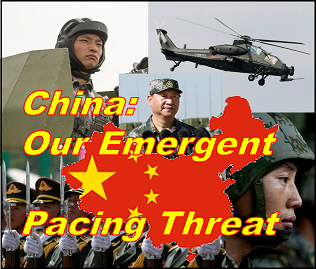


I applaud this worthy effort and daunting exercise. That said, it seems incomplete and slanted from a one-sided perspective.
I do not see an equal effort to challenge any one-sided idea/conclusion, only speculation on what that may be. The points also lack a genuine Chinese voice. No spectrum of interviews: random millennial, random citizen, scientists, etc. No mention of pandemic consequences like the recent corona virus.
I can accept many of the points, but I am not convinced. I am most interested to see candid analyses of the author’s assumptions. At minimum, a “4-ways of seeing”. How do: they see us, we see them, we see ourselves, and they see themselves.